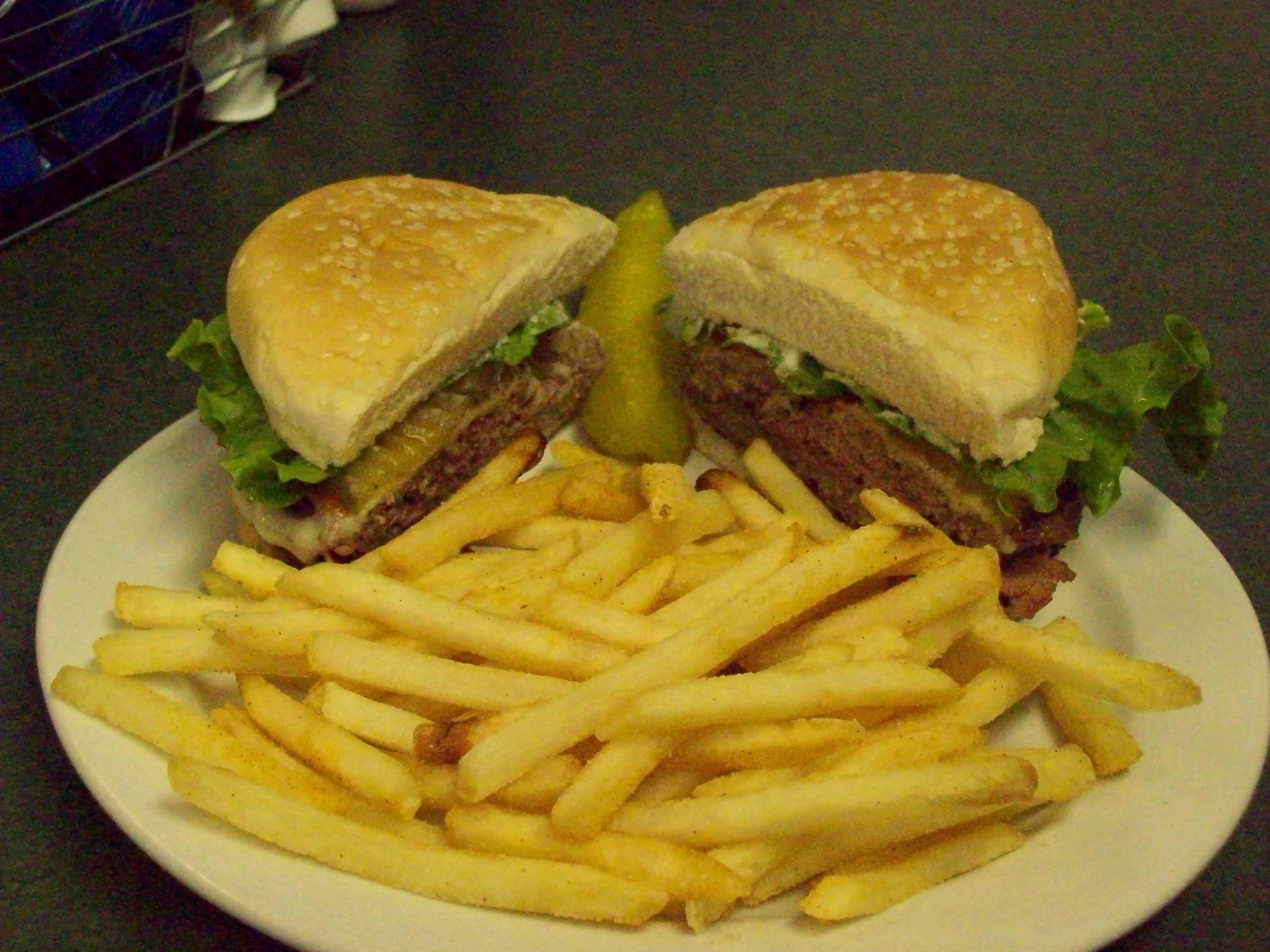During these times of Trial and Trouble, as we “Shelter in Place” and “Self-Quarantine” because of the COVID-19 Pandemic, family and friends can sometimes become a little stir-crazy and manic while searching for things to do.
My sister, bless her soul, reached out to our siblings for memories of the lunches and the elaborate sandwiches our late mother used to diligently prepare and pack for us on our way to school.
This is one of those memories.
“A good sandwich is a much greater work of art than any run-of-the-mill painting or sculpture.”
The best sandwich I have ever eaten was also one of the simplest.
But that, of course, is the wonder and genius of its achievement.
I was on assignment broadcasting from the United States Open Golf Championship contested at Shinnecock Hills, a toney, ultra-exclusive private club located near the middle of Long Island, in the village of Southampton, New York.
In those days, Media could play the golf course on Mondays following the final round of the Championship.
The USGA, the governing body of golf and in charge of selecting the golf courses where our National Championships are conducted, was inclined to award their choice of sites from a very narrow, prestigious, and celebrated list of the best and most challenging courses in the United States. It is an appealing inducement to stay over an extra day and play.
Over the years, many of my media friends and I took advantage of this perk a lot. Problematic were the golf courses, besides being exceedingly beautiful and famous, were also extremely difficult and tended to beat your brains out.
Shinnecock was one of those courses.
A friend and I were doing a two-for. We had made reservations to play another of the famous courses in the vicinity the following day. Still, alas, my friend, tired, worn out, and frustrated with his performance at Shinnecock, cried uncle and canceled our plans for the next day.
Since I had time to kill before my flight that afternoon, I checked out of my hotel, packed the car, and headed east on the Long Island Expressway with nothing on my mind except to enjoy the sights, sounds, and mid-summer beauty on one of the most iconic roadways in the entire country.
As the highway narrowed to a two-lane road on its journey to the lighthouse designating the end of the mainland, I had noticed a spattering of small, quaint, two-tabled fish stands lining the roadside and, for some oddly exotic reason, that appealed to me.
After visiting the lighthouse in Montauk and making a mental note that I was standing on one of the most eastern points of the Continental United States, I turned back west, retracing my path to LaGuardia and my flight home.
Midway, at random, with no intentions whatsoever, I pulled off the roadway, slid to a stop in the gravel next to a small eatery with two picnic tables out front, a four-stool counter, and a large, weather-beaten chalkboard advertising the daily specials.
I grabbed a stool at the empty bar, nodded hello to the guy working behind the counter, ordered a beer and a bowl of clam chowder, sat back, and suddenly realized just how hungry I was.
That moment, the guy who had taken my order and served my soup and beer suddenly returned from the back room with the biggest fish I had ever seen outside of an aquarium.
Grunting from the load, he heaved the oversized fish onto a cutting board, picked up a knife, and started whetting the blade with the expert moves of someone who knew exactly what he was doing.
My interest peaked, and I inquired, “What’s up with the fish?”
With a practiced nonchalance, he pointed the knife at the chalkboard I had neglected to read when I entered.
In big, overstated letters, it read: Today’s Special–Grilled Tuna Sandwich.
Quizzically, I asked, “If the fish was a Tuna, and where did it come from?”
Giving me a look much like a cowpoke would stare a tenderfoot down with, he answered crisply, “I caught it this morning for the special.”
That further aroused my interest, and I asked respectfully, “If the special were available?” if so, “I would like to order one.”
Looking back at me with stoic indifference, he turned, thrust the knife deep into the side of the fish, cut out a generous portion, expertly and quickly fillet the piece, seasoned it lightly, and threw it on the awaiting grill before I could mouth another word.
Finished with my soup, I ordered another beer and watched spellbound as he returned to attacking the tuna with practiced strokes.
Fascinated, I watched as he paused his mastery with the task at hand, turned back to the grill and gently flipped the now sizzling filet, grabbed a bun from a packet above the stove, buttered it lightly on both sides and tossed that on the grill as well.
Completely mesmerized, I watched as he abandoned filleting the tuna and removed my bun from the grill.
Slathering the top half with Mayo, he turned the filet again and gently placed it on the waiting bun with a garnish of lettuce, pickles, and a slice of tomato before placing it in front of me.
And that simple, grilled tuna sandwich was as close to perfection as anything I have ever eaten.
I offer this assessment based on being fortunate to have traveled the world and dined on some of the best cuisines offered by various locales, regions, and countries’ culinary specialties.
Not to boast, but I have sampled tapas in Madrid, Muffulettas on Bourbon Street, devoured Po Boy Shrimp Rolls in Key West, sat down for Irish Stew in a Dublin Tavern, Red Beans and Rice in San Juan, enjoyed Pastrami and Swiss at a Jewish Deli in Mid-Town, relished Sausage Buns in London, Coq au vin in a Paris Bistro, and $20.00 Hamburgers on the Beach in Malibu.
In all those culinary encounters, I have gathered the following lessons about food, especially sandwiches, and offered them freely with no guile whatsoever.
Bread is paramount.
Without a fresh, crusty, and preferably toasted foundation, it is not a sandwich; it is a mess.
The filling must contain protein and be seasoned gently but distinctly with local and regional flavors.
Both halves of the bread need accouterments—butter on one side, Mayo on the other.
Garnish needs to be simple. Overstated, it becomes a salad on a bun.
Every great sandwich needs a pickle on the side.
Starch, while unnecessary, can add to the presentation and balance the filling.
With those lessons in mind, you ask what I recollect about my childhood lunches.
I remember vividly every time I opened my lunchbox; it was an adventure in gastronomic delight, a revelation, and a surprise, not just for me but for the other kids.
Most had never seen the variety or abundance our mother could pack in a simple brown paper bag.
But there was more to those lunches than just food.
Much more.
Mom realized and understood the genius of a perfect sandwich was above and beyond the bread and accouterments, the pickles, and the meat.
Above all else, our mother was an artist and, like all virtuosos, understood a splendid work of art requires sacrifice, and sacrifice is always about love. Without love and sacrifice, great works of art are not possible.
Food was our mother’s art, and her sandwiches were a unique canvas.
A great sandwich is constructed of many layers that all contribute to the collective work of brilliance it may become. Still, it was the added ingredients of devotion, ardor, and zeal that made our mother’s sandwiches the masterpieces they were.
It is that artistry that I remember most and still recall each time I take a bite of a perfectly produced work of art.
Jeff Waters is a PGA Master Professional, a Member of the Golf Writers Association of America, and a lifetime connoisseur of great sandwiches.


